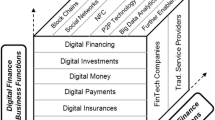Abstract
This study explores various value-drivers of business-to-consumer (“B2C”) Internet companies' share prices both before and after the market correction in the spring of 2000. Although many market observers had predicted that the shakeout would eventually occur (e.g., Perkins and Perkins 1999), the ultimate and previously unanswered challenge lay identifying which stocks would fall and which ones would survive the shakeout. We develop an empirical valuation model and provide evidence that the Internet stocks that this model suggests were relatively over-valued prior to the Internet stock market correction experienced relatively larger drops in their price-to-sales ratios when the shakeout occurred. This result is robust to the inclusion of competing explanatory variables suggested by the economics literature related to industry rationalizations.
We examine the ability of a valuation model comprised of both financial (accounting) variables and nonfinancial web traffic metrics to explain Internet companies' market values during each of 1999 and 2000. Our findings suggest that the reach and stickiness web traffic performance measures are value-relevant to the share prices of Internet companies in each of 1999 and 2000. Our findings of significance for the year 2000 contradict the recent claims of some analysts that web traffic measures are no longer important. We also explore the valuation role of our proxy for B2C companies' current rate of “cash burn” and find that this proxy is a significant value-driver in each of 1999 and 2000, but with differential valuation implications for each period. Our results suggest that the market was favorably disposed towards Internet companies' aggressive cash expenditures in 1999, but appeared to adopt a more critical view of Internet companies' cash burn rates in 2000. Our results further suggest that investors adopted a more skeptical attitude towards expenditures on intangible investments as the Internet sector began to mature. We find that investors appear to implicitly capitalize product development (R&D) and advertising expenses (customer acquisition costs) during the earlier period when the market was more optimistic about the prospects of B2C companies. However, only product development costs are implicitly capitalized into value, on average, subsequent to the shakeout in the spring of 2000. Finally, we provide statistical evidence to support the conjecture that different parameter vectors characterize the estimated market valuation models for each of 1999 and 2000. Overall, our study provides a preliminary view of the shakeout and maturation of one of the most important New Economy industries to emerge to date–the Internet.
Similar content being viewed by others
References
Amir, E. and B. Lev. (1996). “Value-relevance of Nonfinancial Information: The Wireless Communications Industry,” Journal of Accounting & Economics (Aug.—Dec.) Vol. 22, Nos. 1-3, pp. 3-30.
Barron's Online, March 20, 2000. “Burning Up:Warning—Internet Companies Are Running Out of Cash—Fast” (available at: http://interactive.wsj.com/archive/retrieve.cgi?id=SB953335580704470544.djm&template= barrons.tmpl).
Business Week, December 14, 1998 “Internet Stocks: What's Their Real Worth?” pp. 120-122.
Cohen, J. (1999). Internet Investing White Paper, Wit Capital (www.witcapital.com).
Demers, E. and K. Lewellen. (2001). “The Interaction Between Product and Financing Markets: Evidence on the Marketing Role of IPO's,” unpublished working paper, University of Rochester.
Gardner, D. April 26, 2000. “Amazon's Customers Stick Around” (available at: http://www.fool.com/portfolios/ rulebreaker/2000/rulebreaker000426.htm).
Greene, W. H. (1997). Econometric Analysis, Upper Saddle River, NJ: Prentice-Hall.
Hand, J. R. M. (2000a). “Profits, Losses, and the Non-Linear Pricing of Internet Stocks,” Unpublished Working Paper, November 2000, University of North Carolina.
Hand, J. R. M. (2000b). “The Role of Accounting Fundamentals, Web Traffic, and Supply and Demand in the Pricing of U.S. Internet Stocks, February 2000, University of North Carolina.
Harmon, S. (2000). “The Metrics for Evaluating Internet Companies.” The Internet Stock Report, February 23rd (http://www.internetstockreport.com/column/article/0,1785,1661 71961,00.html).
The Industry Standard, May 1st, 2000, “Portals Start to Feel the Heat,” p. 63 (also available at http://www. thestandard.com/article/display/0,1151,14412,00.html).
Internet Stock Report, October 12, 1999, “Inflation, Rate Fears Bruise Stocks,” at: http://www. internetstockreport.com/close/article/0,1785,216901,00.html.
Klepper, S. and K. L. Simons. (2000). “The Making of an Oligopoly: Firm Survival and Technological Change in the Evolution of the U.S. Tire Industry,” Journal of Political Economy, Vol. 108, No. 4, pp. 728-760.
Lev, B. and T. Sougiannis. (1996). “The Capitalization, Amortization, and Value-Relevance of R&D,” Journal of Accounting & Economics 21(1), pp. 107-138.
Lev, B. and P. Zarowin. (1999). “The Boundaries of Financial Reporting and How to Extend Them,” Journal of Accounting Research (Autumn), Vol. 37, No. 2, pp. 353-385.
MacDonald, E. (2000). “Fess-Up Time,” Forbes, September 18, 2000, pp. 80-84 (also available at: http://www. forbes.com/forbes/2000/0918/6608080a.html).
Morgan, S. D. W. (2000a). The Technology & Internet IPO Yearbook, 6th ed. New York: Morgan Stanley Dean Witter Equity Research.
Morgan, S. D. W. (2000b). The Technology and Internet Primer, December, New York: Morgan Stanley Dean Witter Equity Research.
Nelson, P. (2000). “How Badly Burned?” Multex Investor, April 13th, 2000 (http://www.multexinvestor.com/ Magazine.asp?ref=ideas20000413%2Ehtml).
Perkins, A. B. and M. C. Perkins. (1999). The Internet Bubble: Inside the Overvalued World of High Tech Stocks. New York, NY: Harper.
Rajgopal, S., S. Kotha and M. Venkatachalam. October 2000. “The Relevance of Web Traffic for Stock Prices of Internet Firms,” unpublished working paper, University of Washington.
Shapiro, C. and H. Varian. (1998). Information Rules: A Strategic Guide to the Network Economy. Boston, MA: Harvard Business School Press.
Trueman, B., M. H. F. Wong and X.-J. Zhang. (2000). “The Eyeballs Have It: Searching for the Value in Internet Stocks,” forthcoming Journal of Accounting Research.
UBS Warburg Global Equity Research. May 2000 Navigating the I-Valuation Jungle (www.ubswarburg.com/ researchweb).
Wooley, S., “Lyin' Eyeballs,” Forbes August 7, 2000, p. 118 (also available at: http://www.forbes.com/forbes/ 00/0807/6604118a.htm).
Author information
Authors and Affiliations
Rights and permissions
About this article
Cite this article
Demers, E., Lev, B. A Rude Awakening: Internet Shakeout in 2000. Review of Accounting Studies 6, 331–359 (2001). https://doi.org/10.1023/A:1011675227890
Issue Date:
DOI: https://doi.org/10.1023/A:1011675227890




